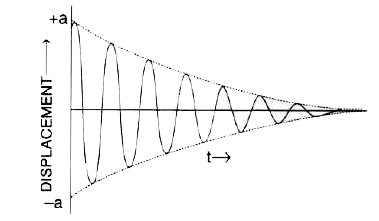What happens to the growth of cells after differentiation?
Step-by-Step Solution
1. Understanding Differentiation: Differentiation is the process by which cells become specialized in structure and function. For example, cells in the root meristem and apical meristem divide and then differentiate into various types of cells such as tracheae, phloem, and xylem.
2. Post-Differentiation Changes: After differentiation, the growth of cells undergoes significant changes. The cells that were once similar begin to take on distinct characteristics that allow them to perform specific functions.
3. Changes in Cell Wall: One of the major changes that occur after differentiation is in the cell wall. The cell walls of differentiated cells often become thicker and stronger. This is particularly important for cells that need to withstand pressure or provide structural support.
4. Changes in Protoplasm: Along with changes in the cell wall, the protoplasm (the living part of the cell) also undergoes changes. For instance, in the case of tracheae elements, the protoplasm is lost after differentiation, which is a key feature of these cells.
5. Formation of Lignocellulosic Walls: In many differentiated cells, especially those involved in transport like tracheae, there is a deposition of lignocellulosic material in the cell walls. This makes the walls not only thicker but also more elastic and capable of carrying water over long distances under stress conditions.
6. Conclusion: In summary, after differentiation, the growth of cells is characterized by significant changes in both the cell wall and protoplasm, leading to specialized functions that are crucial for the plant's overall growth and development.
Topper's Solved these Questions
- BOOK - AAKASH INSTITUTE ENGLISHCHAPTER - PLANT GROWTH AND DEVELOPMENTEXERCISE - EXERCISE30videos
PLANT GROWTH AND DEVELOPMENT
- BOOK - AAKASH INSTITUTE ENGLISHCHAPTER - PLANT GROWTH AND DEVELOPMENTEXERCISE - ASSIGNMENT (SECTION - A)50videos
PLANT GROWTH AND DEVELOPMENT
- BOOK - AAKASH INSTITUTE ENGLISHCHAPTER - PLANT GROWTH AND DEVELOPMENTEXERCISE - ASSIGNMENT (SECTION -D)10videos
PLANT GROWTH AND DEVELOPMENT
- BOOK - AAKASH INSTITUTE ENGLISHCHAPTER - PHOTOSYNTHESIS IN HIGHER PLANTS EXERCISE - Assignment(section D)10videos
PHOTOSYNTHESIS IN HIGHER PLANTS
- BOOK - AAKASH INSTITUTE ENGLISHCHAPTER - PLANT KINGDOM EXERCISE - ASSIGNMENT SECTION -D (Assertion - Reason Type Questions)10videos
PLANT KINGDOM
Similar Questions
What happens to the growth of roots during water logging conditions?
View SolutionThe diagram in Fig. shows the displacement time graph of a vibrating body.

What happens to the vibrations of the body after some time?View SolutionWhat happens after vasectomy?
View SolutionWhat happens when blood cells are placed in pure water?
View SolutionCell expansion and cell differentiation.
View SolutionWhat would happen to the life of a cell if there was no Golgi apparatus
View SolutionWhat happens to the probability of finding an electron in the MO's after the combination of two AO's?
View SolutionWhat would be expected to happen if
dividing cells stop differentiating.View SolutionWhat happens to the cells in potato to which surrounded a bore with sucrose solution in it
View Solution……………………, ……………………… and …………………. pigments of cone cells help in the differentiation of colours.
View Solution

